Sustainability is a noble goal in and of itself. But, it’s also a no-brainer. Because if we’re only taking and never giving back, we’ll be out of a place to live.
A thriving planet is essential for us to keep on living and picnicking and catching the latest movie starring the heartthrob of the moment. A thriving human race, not so essential for the planet.
So, the obvious default position should be maintaining harmony with our only planet. I mean, how else are we going to keep up with the latest in [insert doe-eyed heartthrob of your choice] flicks?
Each of us can do our part to reduce our carbon footprint, sure. And we all should. But, individual actions can only do so much. Businesses need to be setting examples for sustainability, even where governments fail to do so.
Why should businesses go green?
Beyond the existential reasons for going green, consumer data is also giving financial reasons to do so as well.
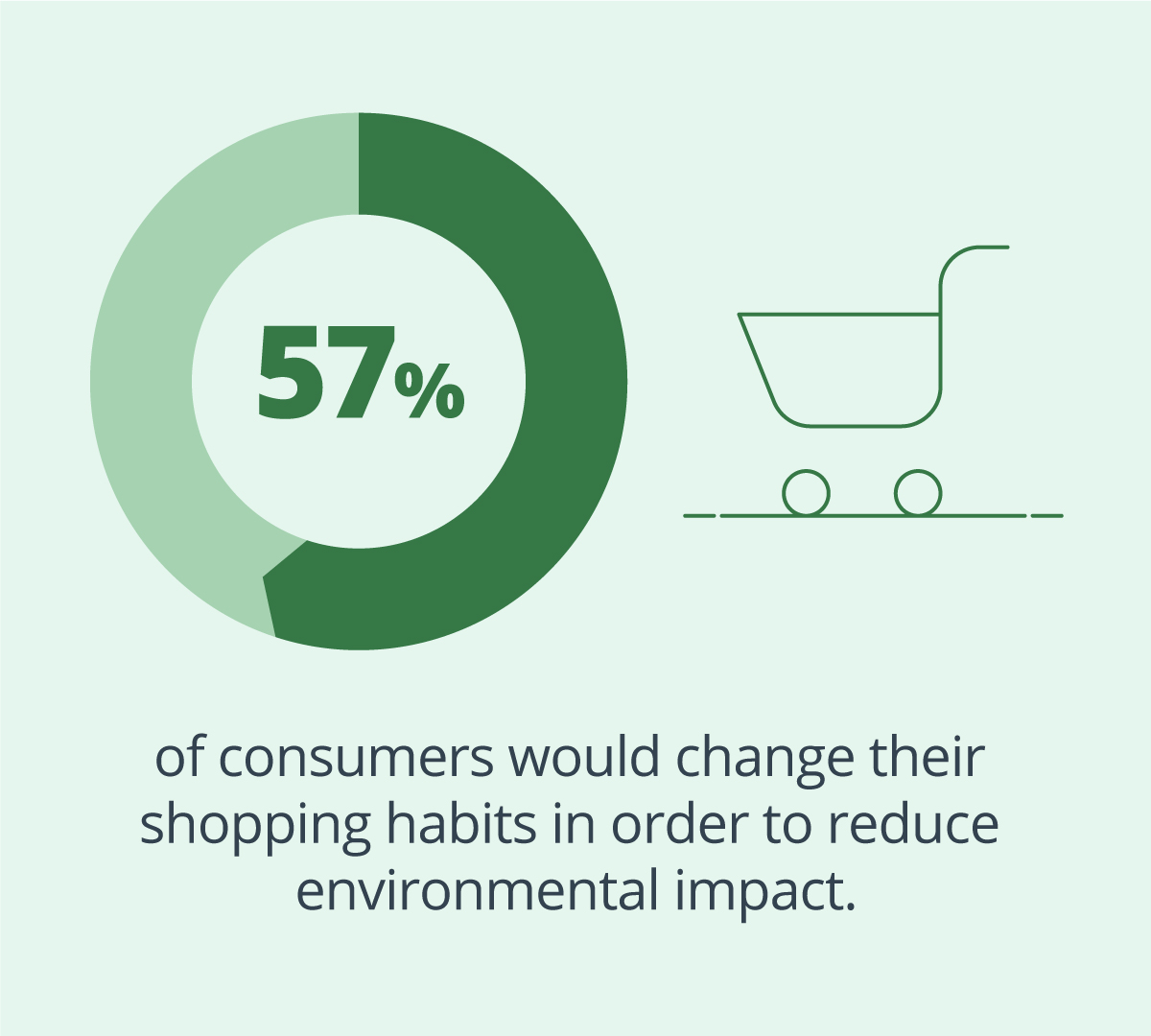
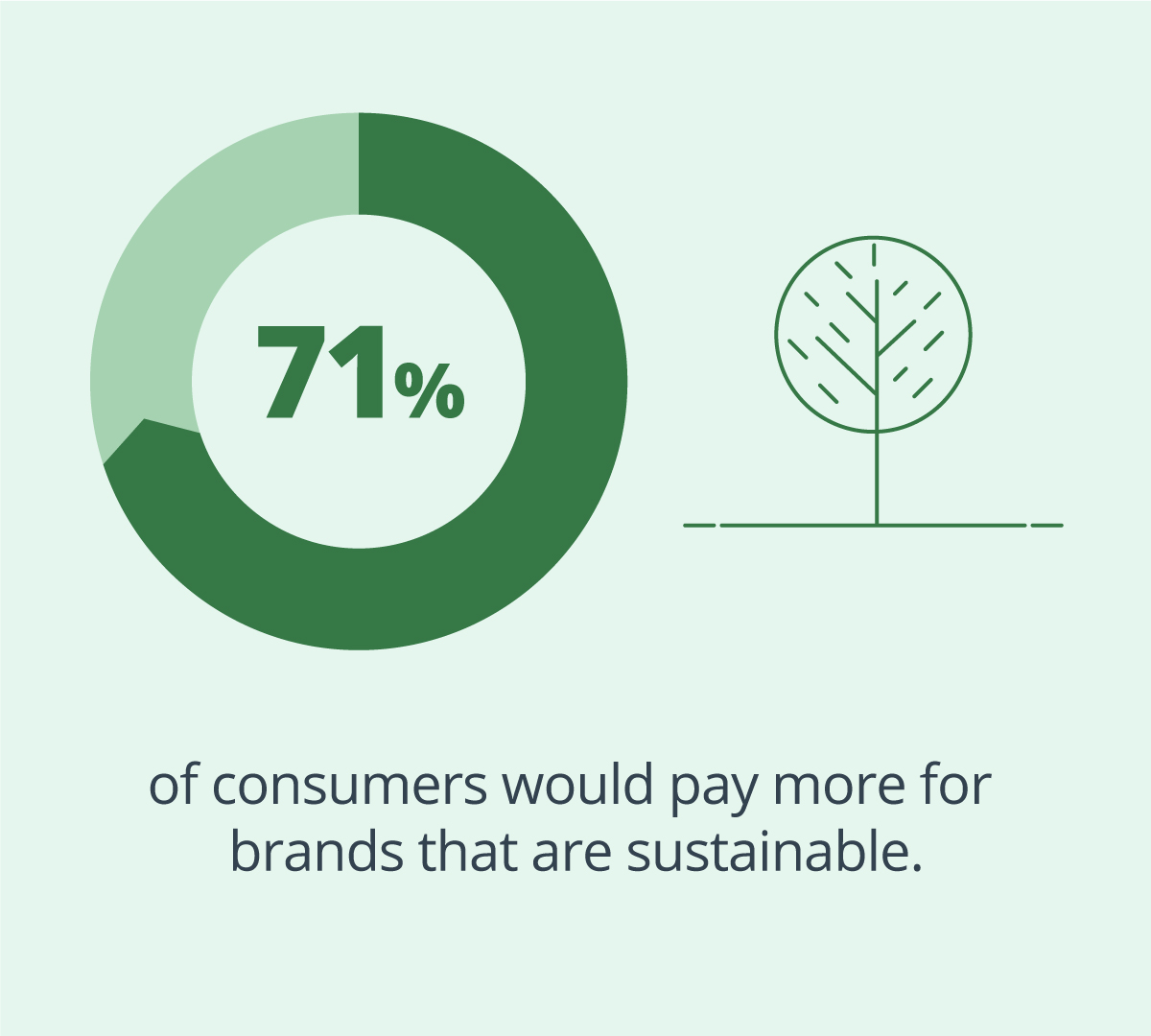
In a recent global study, it was shown that 57% of consumers would change their shopping habits in order to reduce environmental impact. Further, of those consumers, 71% would pay more for brands that are sustainable.
One last stat from that study: a whopping 77% of consumers think it’s at least moderately important that a product be sustainable and environmentally responsible.
In many ways (which we’ll go into below), going green can actually save your business money. Who doesn’t like that?
What companies are going green?
Companies, both big and small, are beginning to do their part to move toward environmentally sustainable business models.
Here are some examples of big companies doing their part:
- Etsy is now offsetting the carbon of every shipment through its platform. Sendlers that use Etsy are actually shipping their wares climate positive!
- Shopify has done several things, from making its operations carbon neutral and investing in carbon sequestration to creating a sustainability fund and using LEED-certified offices.
- Patagonia does a lot. They have a goal to be carbon neutral by 2025. They invest in regenerative organic agriculture and are moving toward 100% renewable and recycled raw materials. They do clothing trade-ins and repair events to extend the life of their clothing. Plus, they give 1% of their sales to help preserve and restore natural environments.
Of course, there are tons of smaller companies doing great things on the sustainability front. We’re proud to have some of them as customers.
A bunch of ways to make your business more sustainable
So, by this point, you are really excited to enact new ways of greening your business. Good, that’s what I was going for.
Here’s a handful of ways you can start being eco-friendly in your business.
Go vintage

Let’s start with a fun one.
Sure, you could go out and buy brand new couches and tables and whatnots, creating a particular minimalist vibe in the office. The singular scent of brand new fabrics and glues permeating through the office.
Or you could go vintage furniture shopping, on the hunt for the eclectic vibe your office deserves and which is certain to imbue it with unbounded creativity.
Plus, you’ve saved more material from being needlessly tossed out to slowly decompose in a pile of aggressively stinky things.
Post-consumer and pre-consumer waste products

Along the same lines, you can stock the supply closet with things made from unused scraps from manufacturing (pre-consumer) as well as recycled products (post-consumer).
In many offices and shipping stations, this translates to paper products. Reams of recycled printing paper, stacks of cardboard boxes, bins full of paper cushioning, rolls and rolls of recycled TP.
This circular economy helps keep waste paper from rotting slowly away in some landfill, giving it new life in your printer or as an expertly folded paper airplane (hours upon hours of fun).
And once you are finished with it (i.e. your paper plane crashes one too many times), you can toss it in the recycle bin to be born anew once again.
It doesn’t stop at paper products though. Post-consumer recycled plastics can go on to be used for sturdy packaging for products (like Seventh Generation detergent, for instance). Where plastics need to be used, they should really be recycled material.
Use green and sustainable products

Toxic chemicals aren’t just bad for your employees. They also end up down the drain and in the landfill, impacting the environment, animal habitats, and water quality.
There are now tons of cleaners that are non-toxic, biodegradable, cruelty-free, organic, and sustainable. And, they still do the job just as well!
Just as you can use safe and green products within your business, you can ensure that your products are also sustainable. The reasons you would want to buy something sustainable are the reasons why shoppers would want to buy something sustainable from you.
How you create products that are ethical and sustainable comes down to all the materials you use to make them. Keep reading to learn about green procurement.
Recycle
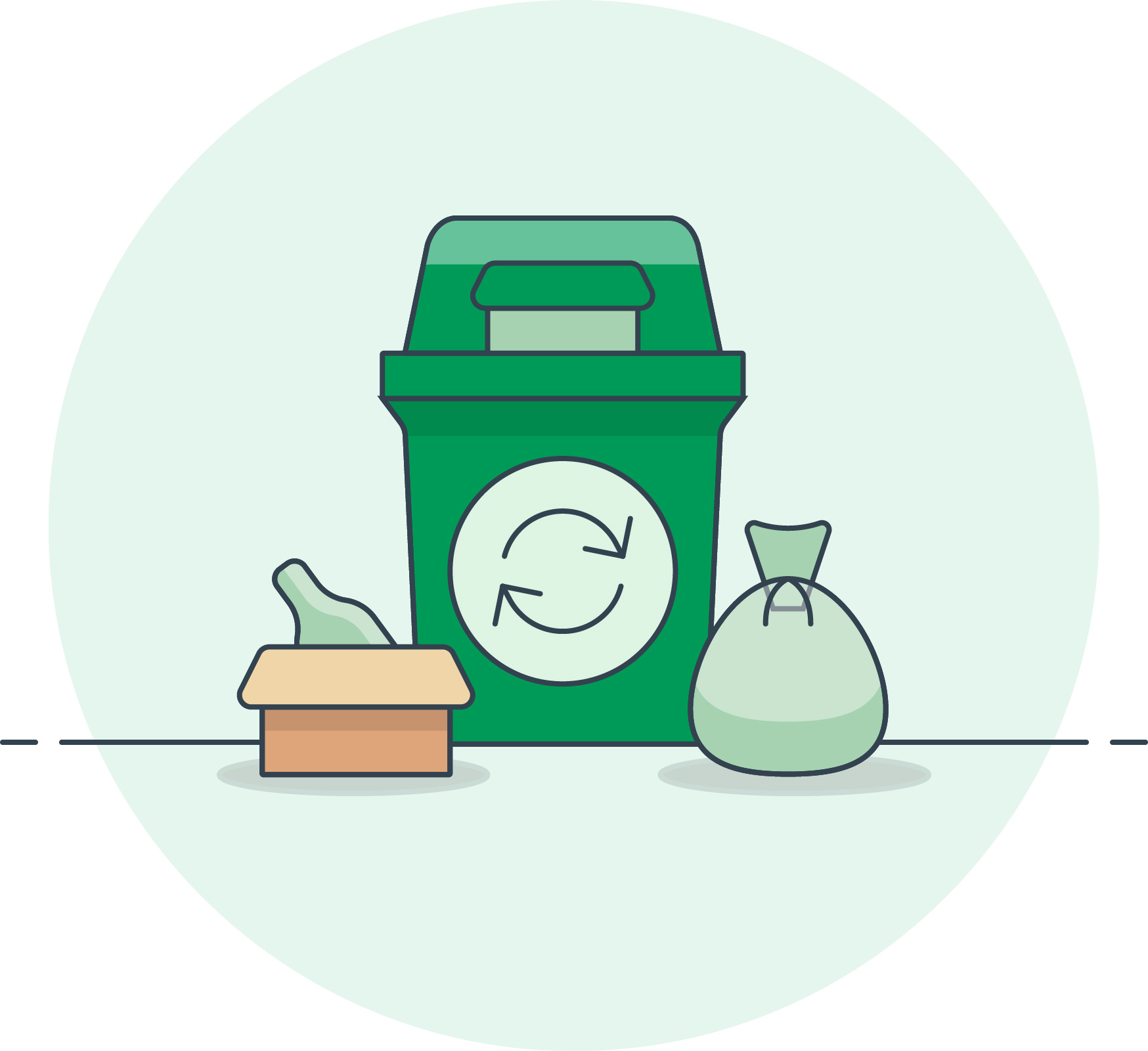
While many municipalities are starting to compel you to recycle and helpfully providing a bin for you, it’s important to mention it.
Paper recycling can divert a whole lot of waste away from the landfill so that it can make its way into new paper products that you can use again.
That means all those cardboard boxes and paper cushioning (if they can’t be reused) you use for shipping as well as the cascade of printer paper you may go through.
If your office is still hot on the bubbly water craze, those aluminum cans are super recyclable and make a satisfying crunch when you smash them down.
Many plastics are recyclable but it’s complicated. Even when you do your due diligence by checking city recycling rules, cleaning them well, and putting them in the right bin, it might not make it to the recycling plant.
So, it’s worth considering glass over plastic when purchasing, just in case. Nonetheless, you should keep recycling what you can.
Reuse
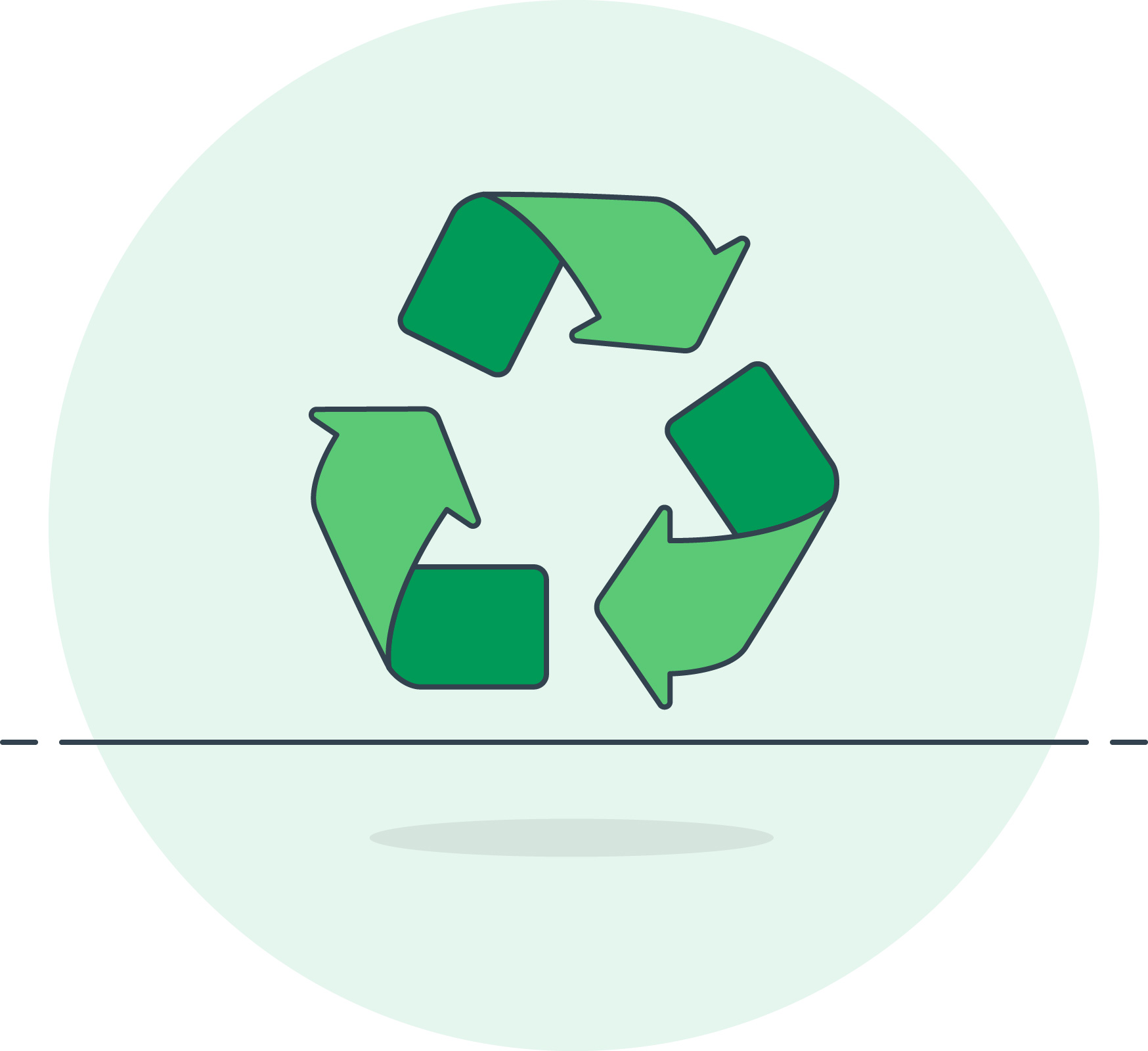
Not everything needs to come in its own disposable package. Tap water can be filtered and cabinets can be filled with drinking glasses.
Next to those glasses, you can house bowls and plates that keep getting reused until Jake accidentally breaks them (come on, Jake).
In the warehouse (or wherever your shipping station happens to be), reusable packaging can be anything from plastic returnable bins, cardboard boxes that aren’t worse for wear, and paper cushioning from received packages.
As the Zero Waste movement gains steam, there are more and more shops popping up to make the journey to no-waste simpler. We've even rounded up some of the best Shopify and Etsy shops we could find.
There are plenty of common fails in how we package that can easily be remedied.
Here are some ways that businesses have integrated reuse into their model:
- Businesses like the Package Free Shop explicitly focus on low and Zero Waste living, carrying products that either utilize a reusable container or that don’t require any disposable materials.
- Grocery co-ops all over often encourage using reusable containers for bulk foods.
- Breweries and taphouses offer growlers that can be continuously refilled with fresh and delicious beer as needed.
- Ghirardelli Chocolate Company moved from cardboard boxes to reusable totes for the distribution of their products internally.
- Many companies reuse cardboard boxes for shipping out their goods, either from shipments they receive from vendors or reclaimed from recycling bins.
- New companies like RePack are trying to move eCommerce stores toward a sturdy, adjustable sized, and returnable shipping package.
By moving more toward reusables, you can help stem the tide of waste while saving money. No need to fill bins with single-use plastic bottles when you have multi-use glasses and mugs.
Learn more about sustainable packaging from our big guide.
Compost

The coffee grounds alone are good enough reason to compost in your workplace.
Many municipalities have composting programs or even require it, adding a new bin to your collection.
There are many good reasons to compost—it creates nutrient-rich soil, it keeps your trash from stinking, it’s science (reason enough, really)—but most importantly, greenhouse gas emissions are greatly reduced by the diversion from landfills to compost heaps.
You can pass on the gift of composting to your customers by using compostable packaging (like our fully home compostable mailers) thus reducing their frustration with the usual bulky and wasteful packaging and saving more waste from heading to the landfill.
Cardboard boxes and shredded paper can be used in compost as a ‘brown’ material to balance out the ‘green’ material.
If that doesn’t quite make sense, you can learn more from our post about how composting works. Also, you can read up on how compostable and biodegradable are not interchangeable terms.
Energy efficiency at the office and warehouse
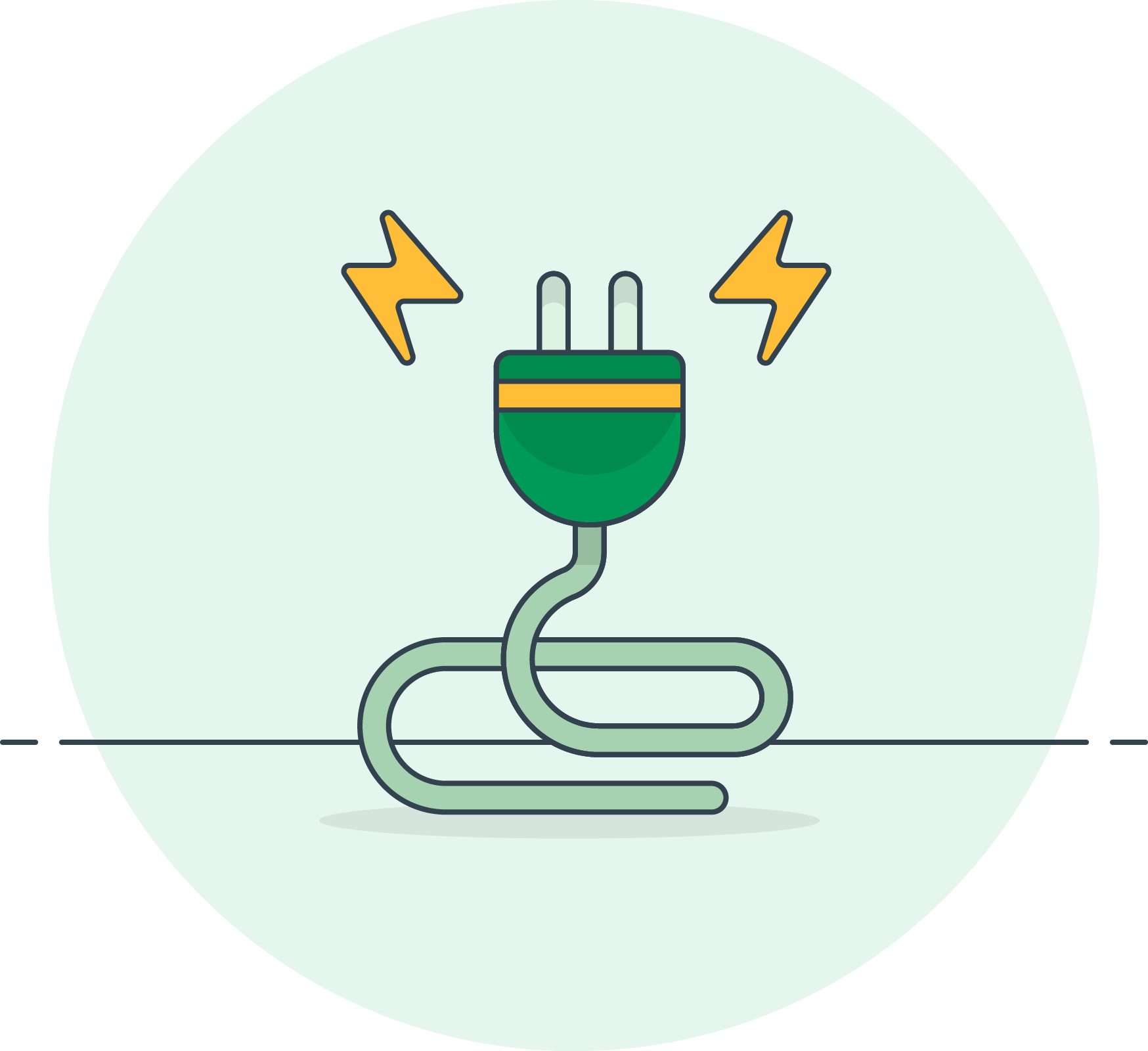
A great example of doing good while saving money. There are several ways you can become more energy efficient in your workplace. Here are some ideas:
- Switch out your old bulbs for long-lasting LED lights. They use 75% less energy than incandescent bulbs and don’t contain mercury like compact fluorescents. Plus, they last 50 times longer than incandescent bulbs!
- Automate light usage. By changing out light switches with motion sensors, you can keep light usage down to only the times it is needed.
- Utilize natural light. Inside lights can be draining for humans and electricity alike. When the sun is out, you can dim or turn off your lights to save energy (and recharge your people).
- Program your thermostat. Depending on the season, you can increase or decrease your overnight temperature setting so you are wasting energy on unoccupied space. New smart thermostat systems can use sensors to make these changes automatically.
- Laptops over desktops. Desktop computers are real energy hogs. Laptops use up to 80% less electricity!
- Turn off or put to sleep. There are a lot of machines in a typical workplace and they need not all be humming at all times. Shut them off when not in use. For computers, you can easily set up energy-saving so that they get some shut-eye when not used for a time.
Move to renewable energy

You may power your business on blood, sweat, and tears (origin stories need to be legendary), but you also need electricity to keep the lights on.
Depending on the source of electricity in your region, you could be starting very clean or super dirty. The majority of electricity in the US and Australia is powered by coal and gas, which aren’t known for their positive environmental impacts.
There are a few sources of renewable energy:
- Wind. Massive fields of turbines harness the wind to create a significant amount of energy at a low cost.
- Solar. Acres of photovoltaic panels lay out in the sun, attempting to get a tan but instead yielding instant energy for homes throughout their region.
- Hydroelectric. Huge dams constrict the flow of water and use it to spin turbine blades and thus generate electricity. The large-scale damming of water (at the largest plants) can have a negative impact on natural habitats.
- Geothermal. Super hot water from drilled wells is pumped through turbines. Tada, electricity.
- Tidal (or Ocean). Early days for this one. Harnesses the power of approaching tides to create electricity.
Wind, solar, and hydroelectric are the main renewable sources used at this time.
Renewable energy usually only accounts for slivers of the energy pie (single-digit percentages throughout). So, it isn’t super likely that your electricity is starting out renewable.
Business owners themselves can take it upon themselves to make the move to renewable energy. Like many homeowners, you can slap solar panels on the roof and start capturing the sun’s abundant energy.
The cost of purchasing may be high but you can receive tax credits in the US and Australia to take care of some of the cost. In the long run, this initial investment will save you money.
Other sources of renewable energy are sometimes attainable for businesses through Power Purchase Agreements between your business and the company generating the electricity (be it wind, solar, or hydroelectric).
Provide public transit commuter benefits

If you live and work in a bustling city, driving can be a real drag. Traffic is no fun, parking can be a hassle, and happy hour is not really in the cards.
Luckily, there is public transportation! Hop on the bus or train and your time is your own to stare off into the middle distance, listen to a podcast, or put your time in on the latest book club selection.
As an employer, providing commuter benefits not only helps reduce unnecessary car commutes but also increases happiness.
Give flexibility for remote work

We all like a bit of water-cooler gossip and idle munching in the breakroom, but gathering all together is no longer an essential part of working for many people.
While there will always be workers who can only do their job at a workplace, there is an increasing contingent that can do just as much at their home office (or couch) as in their workplace.
As we’ve seen from the pandemic, this drastic change can have a huge impact on carbon emissions.
As commutes dwindle, so do the puffs of exhaust from their tailpipes.
Green web hosting
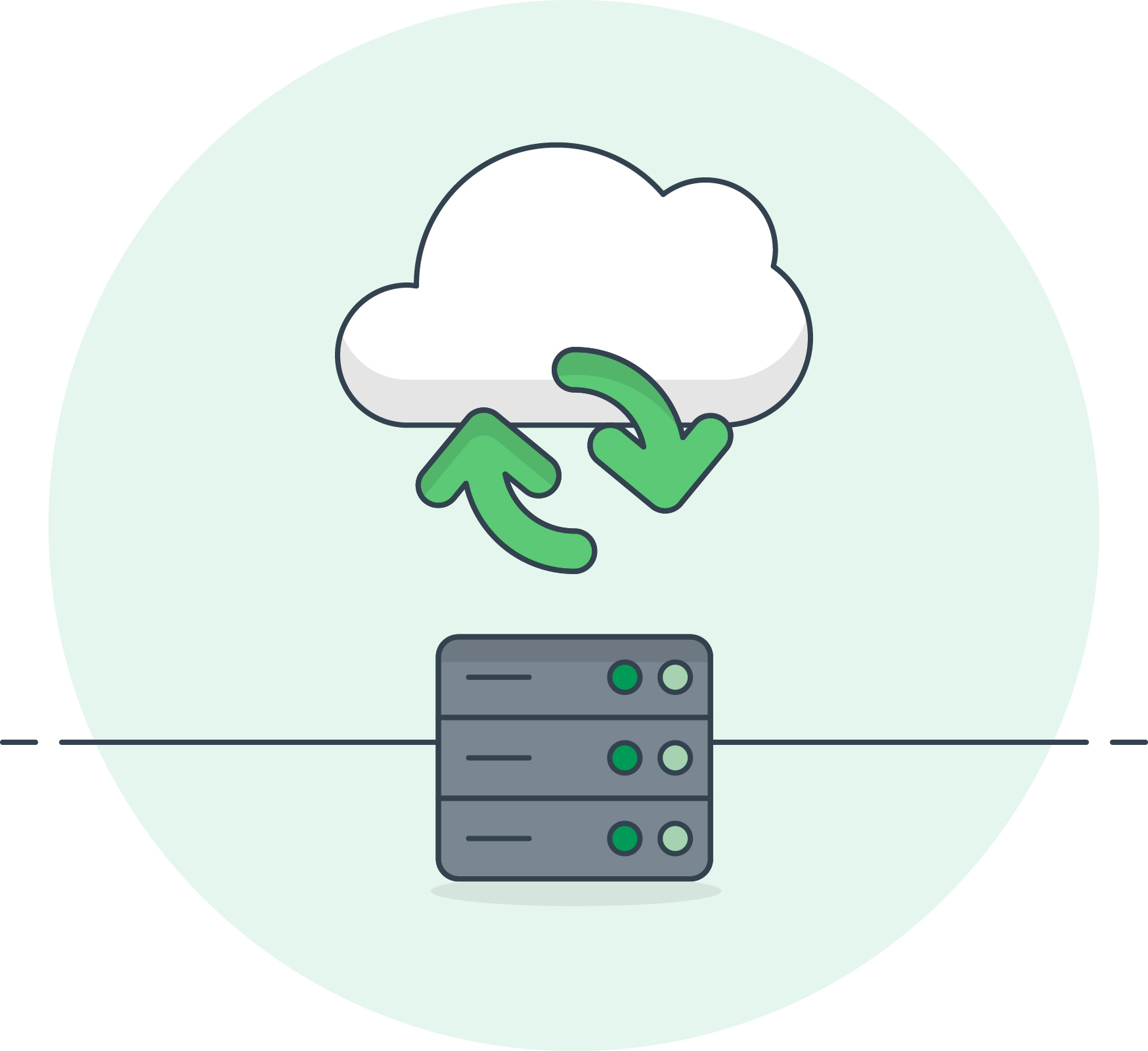
Your website and all of its data aren’t actually floating around in a cloud somewhere, waiting for your customers to call down information like magic.
That cloud is actually a very grounded set of servers somewhere, pulling up your data from a very physical piece of hard drive. And these server farms are rather energy-intensive.
To battle that, certain web hosting companies offset their massive energy consumption in various ways.
Because even the intangible things (from your perspective at least) can take a toll on the environment.
Offset your emissions
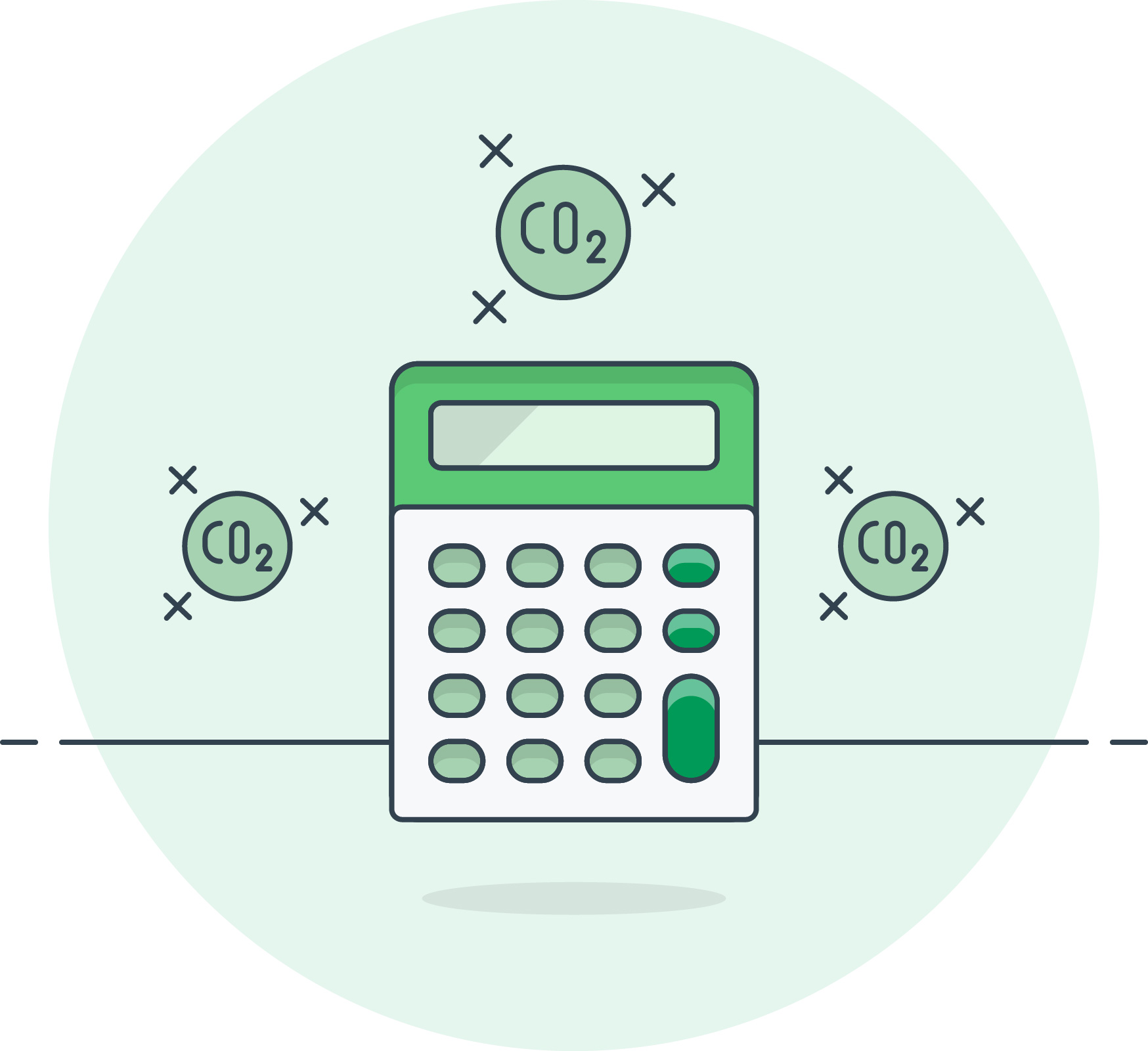
Even if you don’t undertake some of the other methods of greening your business, you can always offset your carbon footprint.
Any individual or business can estimate their own emissions and offset them with one of many great organizations.
The estimation may be the difficult part, but many carbon offset marketplaces have calculators to help you simply estimate your footprint and helpfully guide you straight to buy the equivalent credits.
Here are some great organizations to offset your greenhouse gas emissions:
The key is to find organizations that are certified by third-party groups like Green-e or The Gold Standard. If they don’t say, be wary.
Transparency is very important here. You want to be sure your money is going to projects that are having a real effect.
Green your procurement policy

Just as consumers are finding it increasingly important to not only buy from sustainable companies, businesses should also take stock of whom they are sourcing from.
Auditing your suppliers is a good place to start. You can create a baseline for what you expect of your suppliers and make sure they are meeting this threshold.
For instance, to create a fair trade product, it is imperative that you are sourcing all materials from fair trade suppliers.
As mentioned before, Patagonia is moving toward sourcing entirely from renewable and recyclable raw materials. Tetra Pak only works with suppliers that can provide paperboard from responsibly managed forests.
Ship stuff carbon neutrally!

Last but far from least, you can use Sendle to ship your stuff. Every shipment is 100% carbon neutral, offset by investments in amazing environmental impact projects.
As eCommerce business increases year after year, so does the volume of packages sent to and from people all over the world.
While the operation of an eCommerce site itself contributes way less greenhouse gas emissions to the world, the same cannot be said for the shipments.
So, it’s important that those emissions are measured and offset.

